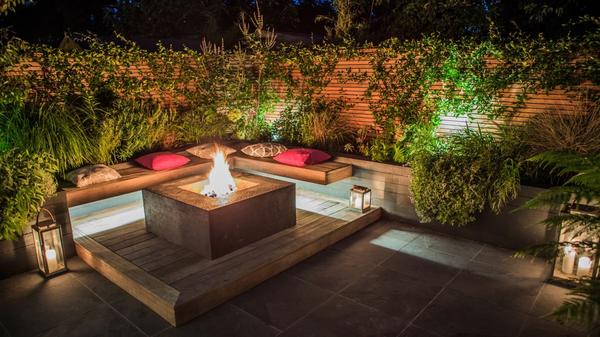You likely have a lot of "smart" devices around your home: speakers, video doorbells, security cameras, thermostats and more. But have you thought about taking those smarts outside your home?
One of the last "dumb" things in your smart home might be your outdoor lighting. If you want a smart outdoor lighting system for your garden, you could cobble together an array of smart home lighting products from various makers or use products from one brand, such as the Philips Hue outdoor line. But I recommend a different route: Upgrade the bulbs in your current outdoor fixtures to LED and use an outdoor plug adapter to make your garden lights part of your home control tech. You won't get all the bells and whistles, but if you can live without nightclub color scenes or built-in lightbulb speakers, you'll like the results of my cheap and straightforward upgrade.
Read: The best outdoor tech of 2021
Now playing:Watch this: See how easy it is to upgrade your garden lighting to...8:37The benefits of LED conversion
Retrofitting your existing garden lights with LED bulbs will deliver four wins:

You need to know a few things about LED bulbs before you start this upgrade.
Bulb type
The first thing to determine is what kind of LED bulbs will fit the sockets in your fixtures. Remove your current bulbs and inspect the base: It will most likely be a bayonet, bipin or wedge.
Bipin bulbs are particularly common and come in a wide variety of sizes that look almost identical. The key differentiator is the spacing between the pins. A G4 bipin has 4mm spacing, a G5.3 has 5.3mm spacing, and so on.
Bulb brightness
We're all used to expressing bulb brightness by wattage, but that's merely a misnomer baked in tradition. Wattage tells you how much power a bulb uses, not how much light it puts out, though the two are at least directionally related.
As you pull each incandescent bulb from your garden lights, try to read the wattage rating printed on it. Then shop for LED bulbs whose wattage is promised as equivalent. For example, you may find that a 1.5-watt LED bulb promises to replace an 11-watt incandescent bulb while delivering as much or more light, so much greater is LED's efficiency.
That huge efficiency difference is why you can add more lights to your system without running into limits of transformer output or wire run length when you convert your bulbs to LED.
Bulb color
The color temperature of a bulb, expressed in degrees Kelvin (K), tells you if the bulb emits warm or cool white light. Generally anything below 4,000K is a warm bulb, while anything above 4,000K is a cool or bluish white. Which you choose is a matter of taste but wood, plants and soil typically look best under warm light while cement, stucco or blue water areas may present better under cool white illumination.
Make it 'smart'
To make your current garden lighting system smart, which usually just means controlled by voice or an app, remove all programming from your power transformer, switch it to the "on" position manually and leave it that way. Then switch the power to it off and on with a wireless outdoor outlet adapter supported by your smart home system, be it SmartThings, Apple, Alexa or Google.
Pro tips while you're out there
Let's look at your LED floodlight options
See all photos+23 MoreWant more tips to spruce your yard and patio?
First published on July 10, 2019 at 10:53 a.m. ET.
Comments Yard and Outdoors Lighting PhilipsNotification on Notification off How To








